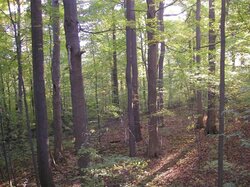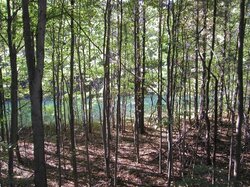hey guys, about to place an order with Baileys , but wanted to confirm what you think of my selections.
i have a first generation husqvarna model 61 . 145lb compression . its tuned and ready to go .
i only cut trees already on the ground, and from time to time ones that are choking other trees. i cross-cut 90% of the time , no ripping. i have about 15yrs of firewood experience, and am always cutting sugar maples, hickories, cherries, oaks and beeches.
i picked a 16" long , 3/8" pitch (.375) .058 gauge bar from oregon company
link: HERE
it has replaceable tips and its very durable i hear.
for the chain .... WELL , i really wanted to try a full chisel, but decided not to because a lot of my wood is sitting on the ground already and has some dirt where it touches the ground on the bottom . i dont want to dull the heck out of the blade from hitting some dirt. also, i cut about once a week for about an hour, so its nothing crazy where i need the speed.
i decided on a oregon semi chisel .058 gauge chain
link: HERE . if i need to ill try a full chisel down the road, but i know how i get the logs laying on the ground so i decided not to.
these items are still in my 'cart' as i will finalize my purchases in a couple days..
any opinions? i know we could debate gauges and so on, but i went with the .058 husky standard to keep it simple.
what you think???
i have a first generation husqvarna model 61 . 145lb compression . its tuned and ready to go .
i only cut trees already on the ground, and from time to time ones that are choking other trees. i cross-cut 90% of the time , no ripping. i have about 15yrs of firewood experience, and am always cutting sugar maples, hickories, cherries, oaks and beeches.
i picked a 16" long , 3/8" pitch (.375) .058 gauge bar from oregon company
link: HERE
it has replaceable tips and its very durable i hear.
for the chain .... WELL , i really wanted to try a full chisel, but decided not to because a lot of my wood is sitting on the ground already and has some dirt where it touches the ground on the bottom . i dont want to dull the heck out of the blade from hitting some dirt. also, i cut about once a week for about an hour, so its nothing crazy where i need the speed.
i decided on a oregon semi chisel .058 gauge chain
link: HERE . if i need to ill try a full chisel down the road, but i know how i get the logs laying on the ground so i decided not to.
these items are still in my 'cart' as i will finalize my purchases in a couple days..
any opinions? i know we could debate gauges and so on, but i went with the .058 husky standard to keep it simple.
what you think???






